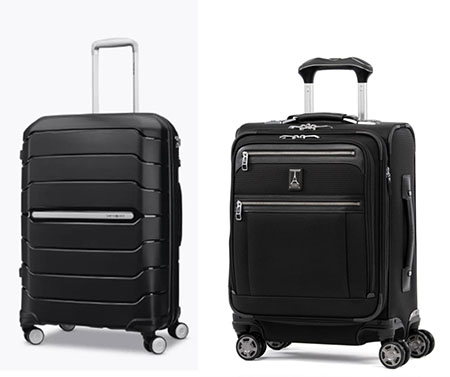Continuing with the “Art of Packing” series, we tackle the debate of luggage types.
Which type of luggage is the best? The best luggage for you is the luggage that best fits your needs. Deciding between hard-side or soft-side luggage does not have to be complicated.
When I first started traveling there were not many options. You had the hard-side heavy monsters with NO wheels in maybe three colors. Fast forward to today and it is a smorgasbord of luggage to choose from. Hard-side, soft-side, two wheels, spinners, convertibles, duffels, backpacks, garment bags, etc.
Having been a flight attendant, I am partial to Travelpro. Genuinely great luggage. I currently own two (a 22” and a 19”) and have had them for 5+ years. Durable, good warranty, nice looking, many options and colors to pick but… it can be pricey (Thank You Macy’s for your super sales!). My next favorite is Delsey, for many of the same reasons at a lesser bite to your wallet. I own two of these (a 24” checkable and a smaller under your seat). I prefer soft-side luggage because of 1) the flexible nature of the bag, 2) outside pockets, 3) they tend to be lighter in weight, and 4) easier to control. A lightweight bag is a must for people who only carry-on. Hard-side luggage is trendy right now (e.g. Away), has come a LONG way, and lighter in weight (~6.5 lbs/2.9 kg) than it was “back in the day”.
Note: What and how you pack should be factored into your decision on which type of luggage is best for you. For maximum capacity of your suitcase, the construction of a soft-sided bag naturally offers more give than a hard-sided luggage.
Without further ado, let us break down the pros and cons hard-side and soft-side luggage.
Hard-side
Soft-side
PRO
- Better protection (with its rigid frame) for items inside the luggage (if they are packaged well)
- Generally, more effective in preventing theft
- Easier to clean
- More flexible in terms of space allowance, most bags have the ability to expand
- Better at taking on trauma
- Outside pockets
- Lightweight
CON
- Items are not easily accessible without opening the entire bag (most tend to zip from the middle and fold open, clamshell style)
- Surface can be easily scratched, cracked, and/or dented
- As a rule, most cannot be expanded
- Can be pricey
- Fabric absorbs water and smells
- Less protection for fragile items (your bag can be smooshed)
- Most side-sided bags can be cut through by ambitious thieves
Hard-side
PRO
- Better protection (with its rigid frame) for items inside the luggage (if they are packaged well)
- Generally, more effective in preventing theft
- Easier to clean
CON
- Items are not easily accessible without opening the entire bag (most tend to zip from the middle and fold open, clamshell style)
- Surface can be easily scratched, cracked, and/or dented
- As a rule, most cannot be expanded
- Can be pricey
Soft-side
PRO
- More flexible in terms of space allowance, most bags have the ability to expand
- Better at taking on trauma
- Outside pockets
- Lightweight
CON
- Fabric absorbs water and smells
- Less protection for fragile items (your bag can be smooshed)
- Most side-sided bags can be cut through by ambitious thieves
Things to think about when selecting luggage:
- Durability
- Mobility
- Weight
- Price
Durability
The last thing you want when you arrive at your destination is the baggage carousel delivering you a damaged bag with all of your contents spilling out or with a broken wheel. Not a good way to start your vacation or business trip. I have had a zipper partially break whilst on vacation but was fortunate to find a meaty lockable luggage strap that got me home.
Brands like Travelpro, Briggs & Riley, Osprey, Eagle Creek, and AWAY are known worldwide for their durable luggage and backed by reliability warranties (limits do apply on what is covered).
Be selective on your soft-side luggage fabrics. Look for a bag made from ballistic nylon/durable nylon (best for wear and tear), waterproof (ideal) or water resistant, and stain-proof. Similar concept for hard-sided luggage; it is a common misconception that hard-sided bags are tougher than soft-sided. It boils down to the materials your luggage is made of. For example, Travelpro hard-side luggage is made with a polycarbonate shell that is relatively lightweight, strong, and designed to flex (somewhat) on impact to prevent splitting and cracking (common issues with hard-side luggage).

Mobility
How do you like to roll? Do you prefer to pull your bag behind you (rollaboard) or pull/push your bag next to you (spinner)? I prefer to pull my bag behind me, a la two-wheels (aka rollaboard).
Wheeled Bags:
Two-wheeled luggage or rollaboards: these bags roll forward and backward on wheels that are recessed into the case (can take up a bit of packing space but protects the wheels from damage). I find the design of two-wheel bags are generally easier to maneuver on uneven surfaces (stairs, curbs, cobblestone streets, public transportation) and running through the airport. They are designed to be pulled behind you at an angle, which may cause strain to wrists and shoulders.
Best Wheel Type: most two-wheeled luggage have in-line skate wheels that are made with a flexible polyurethane (a high resilient flexible plastic). These are easy gliding, hard wearing, and durable wheels.
Four-wheeled luggage or spinners: these bags have wheels that rotate 360 degrees (you can turn the bag in any direction) and are NOT recessed. Having four-wheels provides improved mobility (agile), you can roll the bag next to you by pushing or pulling it and are good for crowded spaces. The protruding wheels take up space in the overhead bin and are more likely to snap off or suffer damage (check the warranty before purchasing this type of bag).
Note: the luggage dimensions for your airline INCLUDE these protruding wheels.
Best Wheel Type: spinner wheels are made from a variety of plastic materials, some more durable than others, but are more likely to snap off due to their protruding nature and smaller than the two-wheeled in-line skate wheels.
Weight
Regardless of what type of bag you choose weight matters. There are many options on the market, but shaving off pounds can also mean a dip in quality. The key is to find middle ground between durability/quality, light weight, and cost. In a quick internet search the average soft-side durable bag comes in around ~5lbs//2.3kg (plus or minus). My TravelPro 19” international spinner rings in at 5.4lbs/2.4kg and my Hynes Eagle 42L Rolling Backpack weighs 4.6lbs/2.1kg (empty). Both bags are made of durable nylon and one has in-line skate wheels and one is a spinner. My Delsey 24” spinner weights ~7.8lbs/3.5kg.
Price
Cost should not be the main factor in deciding what luggage to purchase, but it will factor in at some point. Luggage prices can vary greatly but be wary of cheaply made luggage. A higher price tag is not always indicative of durability. Quality luggage is worth the investment. I shopped Macy’s holiday/super sales for my Delsey, Samsonite, and Travelpro bags. Amazon has been hit and miss for me; I need to try it out before I buy.
The price I paid for my luggage”
- Travelpro 19” international spinner: $140.00 on sale at Macy’s
- Hynes Eagle 42L Rolling Backpack: $90.00 at Amazon
- Travelpro FlightCrew4 22″ rollaboard: $140.00 at The Flight Attendant Shop
- Delsey 24” spinner: $104.00 on sale at Macy’s
- Delsey soft-side 2-wheel underseater: $75.00 on sale at Macy’s
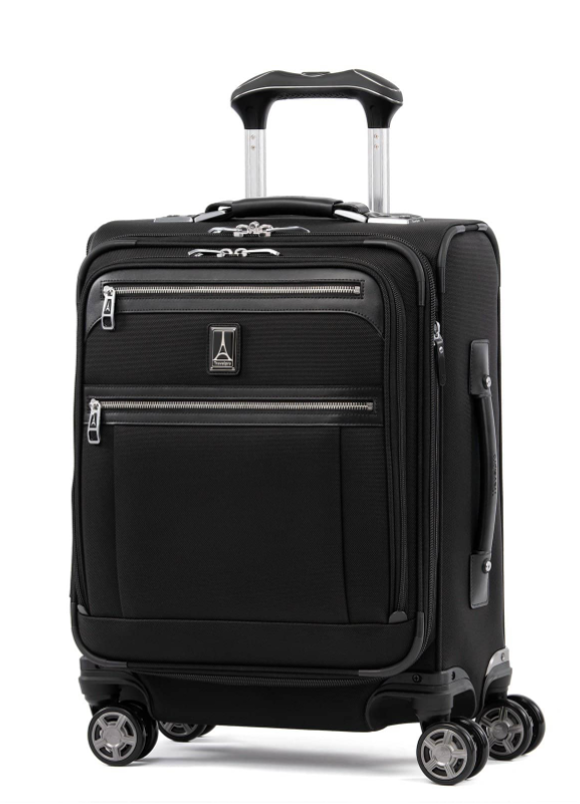
Travelpro 19” international rollaboard
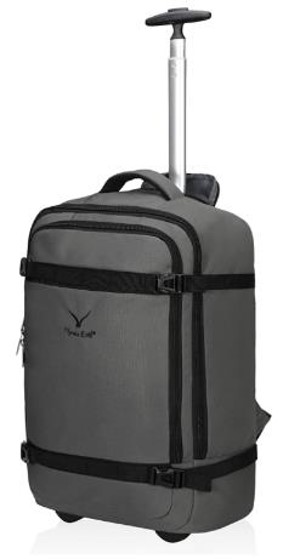
Hynes Eagle 42L Rolling Backpack

Travelpro FlightCrew4 22″ rollaboard
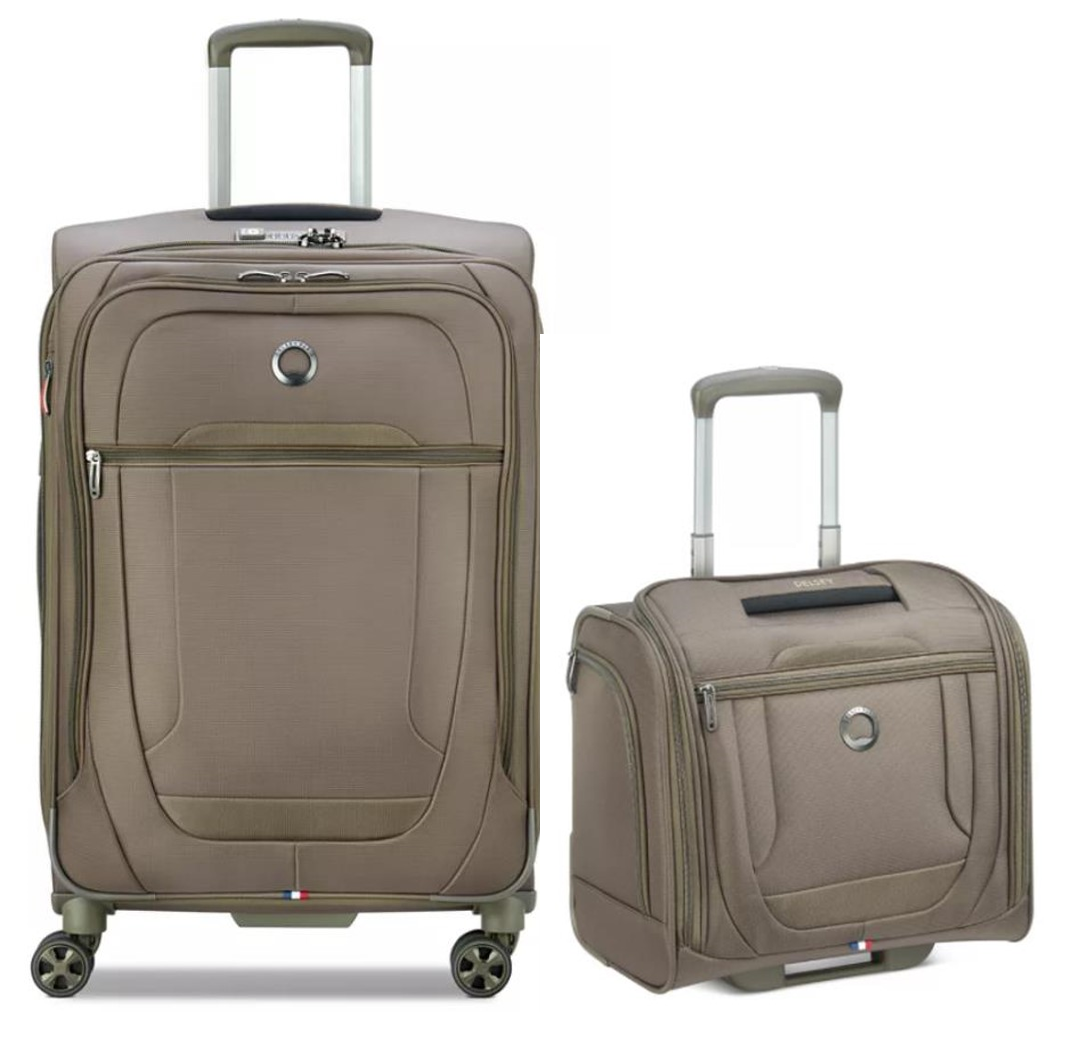
Delsey 24” spinner & 2-wheel underseater
Odds and Ends:
Other bag features to look out for:
Expandable: One of the main reasons people have tended to steer away from of hard-sided luggage is their lack of flexibility or ability to “give”. Side-side luggage has the option of addition space via an extra panel of fabric that can be unzipped when more space is needed.
Meaty Zipper & Pull Tabs: Look for luggage with metal over plastic and larger-toothed zippers (their sturdier stature helps luggage withstand the wear-and-tear of travel and minimizes the chances of them popping open during your travel.
Handle: A sturdy handle that feels comfortable and is built into the inside of the bag is best because the handle is protected from damage. Test the handle before you buy, extend it to its full length and make sure it locks open/closed. If the suitcase is bumping the backs of the legs/foot, that means the handle is not long enough for your height. I am 5’9”/179cm tall, so the extension handle needs to be long enough to pull my bag behind me without running into the back of my foot.
Note: Bags with a detachable J-hook or piggyback clip (a looped/clip on the top of the bag near the handle) allows you to clip a second bag onto a larger one, which comes in handy to clip on your carry-on or personal item onto enables you to have a free hand.
Lock: my Travelpro has a built-in lock, which I do not like, so I opted to purchase a TSA-Approved Lock from Amazon. Whilst these locks may not deter the most determine thieves, they do discourage the casual thief, who will move on to easier targets. When looking at zippers for your new bag, make sure the zipper is large enough to thread your lock through it.
Color: Black is the most common color, as it generally shows the least amount of wear and tear. However…it IS the most common color (meaning 95% of everyone on your flight has a black bag). If you check a bag, the hunt for your specific bag becomes a major challenge. If you opt for black, give your bag a pop of color to stand out, such as a bag tag, lock, handle cover, or luggage belt.
USB Charging Ports: Many newer carry-on bags have a built-in USB charging ports so you can power up your phone on the go. I say hard pass (No thanks). Airlines cracking down on smart luggage with built-in USB charging ports, so forego the hassle and not opt for this feature.
Note: very important to try out your bag. Spin it, run with it, see if it tips easy when you add a personal to the top of it, open all the compartments, look at the wheels, etc.
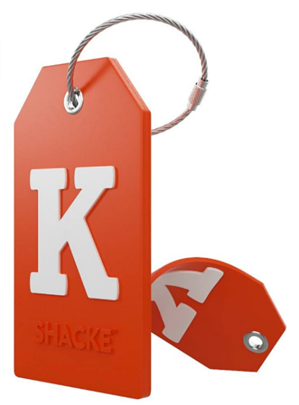
Bright Luggage Tag
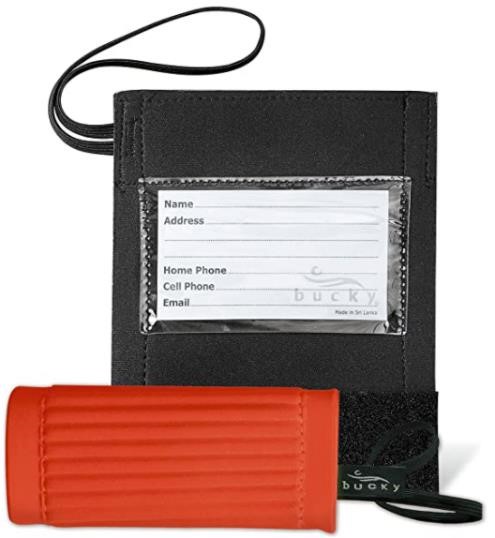
Bright Padded Luggage Handle
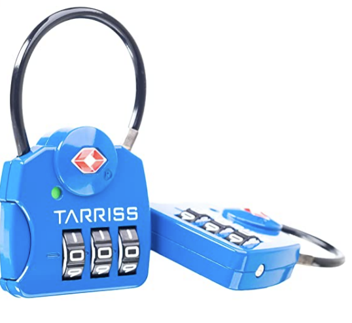
TSA-approved Lock
Do Airlines Prefer Hard or Soft-sided Luggage?
Airlines do not have a preference to what type of luggage you travel with as long as it fits within their stated dimensions. Having worked in the airline business, I can say that checked bags are not treated kindly, it is not white glove service. They go from the check-in counter to the luggage room via a twist and turn conveyor belt, stacked on to either a cart or into a container with everyone else’s bag before being loaded into the belly of a plane only to start the process over in reverse when you land. Bags can get dropped, stuck, caught, dragged, squished, broken, ripped, etc.
Overweight, oversize, and/or Armor All’ed (making the bag super slippery) hard-sided bags garner less patience from baggage handlers. I have a two-inch scar from trying to lift a 100lbs golf bag, the weight snapping the strap/buckle slicing through my finger whilst unloading it from the plane to bring it to the baggage carousel. Airlines reserve the right to deny claims to passengers with damage caused by overstuffed bags, such as broken zippers, as well as poor quality bags and bags that were damaged when checked in. They are however, responsible for repairing or reimbursing a passenger for damaged baggage and/or its contents when the damage occurs while the bag is under the airline’s control, according to the U.S. Department of Transportation’s Aviation Consumer Protection division. Consult the airline(s) you will be traveling with for specific reimbursement policies.
Size and weight restrictions. There is not a ‘one-fits-all’ rule when it comes to luggage weight and size. Individual airlines are entitled to change luggage size requirements, so consult the airline(s) you will be traveling with.
Carry-on: U.S. carriers currently have a maximum dimensions for a carry-on bag are 9 inches x 14 inches x 22 inches (22 centimeters x 35 centimeters x 56 centimeters). This includes handles and wheels. There is (generally) not a weight restriction as long as YOU can lift it into the overhead bin. Flight attendants are there for your safety and not to lift your bag into the overhead. Generally, you are allowed to one (1) carry-on bag (per dimensions above) and one (1) personal item (briefcase, handbag, etc). Always consult the airline(s) you will be traveling with.
Checked: For checked luggage on a U.S. carrier maximum dimensions are 27 inches x 21inches x 14 inches (68 centimeters x 53 centimeters x 35 centimeters) and cannot weigh more than 50 lbs (22 kg). If you exceed the size and weight, you will be asked to pay an excess fee per bag (e.g. $50 per item over limit). Always consult the airline(s) you will be traveling with.

